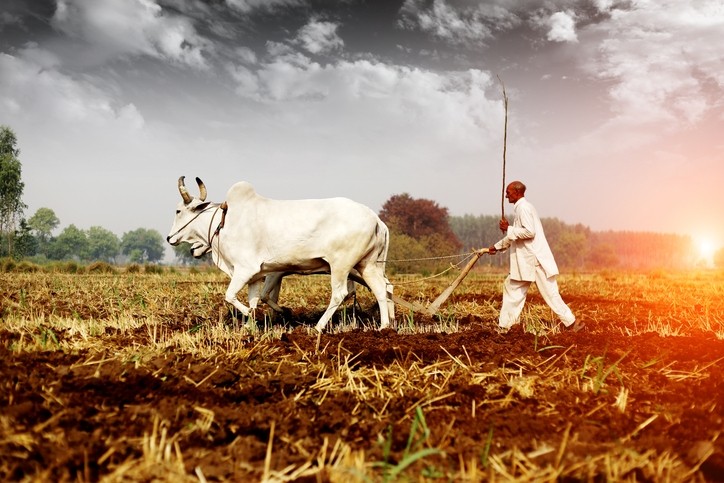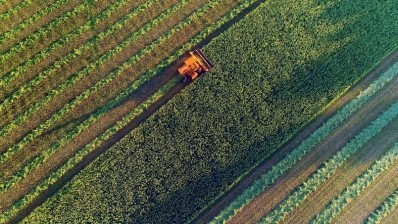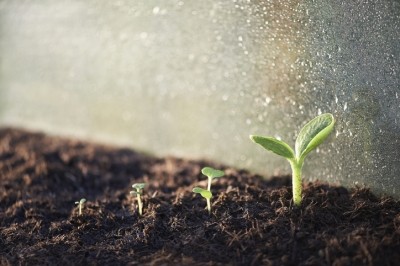Innovation Insider Country profile
India: Are the bets back on?

It can be a precarious existence as an Indian farmer. Erratic weather, unreliable labour, and limited access to finance and agricultural inputs often make it a near impossible job. Logistical difficulties, warehousing, and finding a regular market rarely make it any easier.
But such glaring inefficiencies combined with India’s sheer scale meant it was just a matter of time before money started flowing in.
In recent years, India has become a hotbed of agri-tech startups, tackling problems from soil assessment to financial services, supply chain gaps to farm advisory.
Back in 2019, Indian agriculture attracted just $1.3m in funding from startups keen to solve its problem, according to Omnivore, India’s most prominent venture capital fund, a truly meagre sum in a country of such size. By 2022, however, that figure was up to $2.4bn.
An “agritech explosion is inevitable” said Avendus, one of India’s leading investment banks, in December 2022, predicting this was just the beginning. It estimated that revenues across the sector would surge to $34bn by 2027.
Yet such optimism quickly fell flat. Since then, the sector has hit a major road bump with agri-tech start-ups raising just $940m through the course of 2023 – a 60% drop on the year before. While this is a global trend and not just India – chiefly due to hikes in global interest rates and greater investor caution in the face of rising uncertainty – it has raised concerns that the potential for technical disruption in Indian agriculture has been oversold.
“There is a lot of chaos, bets have gone wrong, and not enough money is coming in for later-stage companies. Exits have been rare. All of it shows that this sector is in crisis,” one Indian agri-tech investor told The Morning Context last year.
The argument goes that venture capitalists must deliver big, quick returns to justify their investments. Yet in agriculture, such exponential growth is rarely possible within a few years. This forces companies to search out unreliable growth streams to the detriment of the sector. And that, critics say, is the exact downfall Indian agri-tech is now experiencing.
It has largely happened on the selling side in agricultural markets where start-ups have spotted a lack of digitisation and opted to move in. Five of the top 10 fundraisers in Indian agri-tech are working on e-commerce and marketplace services, which combined, have raised a total of $719m, according to recent figures from Venture Intelligence.
These start-ups became extremely attractive in the aftermath of Covid lockdowns when demand for such services exploded. The issue is that they offer “little to no value addition to the agriculture ecosystem,” according to Amit Gupta, a director at tech start-up advisors Factoryal. “The real problems – small landholdings, poor access to finance, and inefficient market linkages – remained largely untouched.”
More recently, a rebalancing does seem to be taking place. Funding to upstream startups – those operating on the farm or in food production – grew to 44% of the total investments across the value chain in 2023, up from 17% in 2020, according to a report by FSG, a non-profit consultancy firm.
Concerns remain however over how many farmers are actually benefiting. Venky Ramachandran, an agri-tech analyst and founder of research and consulting firm Agribusiness Matters, points out that many start-ups require farmers to have a certain amount of existing infrastructure as a precondition for their services, meaning smallholdings – which account for more than 8-in-10 Indian farmers – miss out.
“The segment of farmers who benefit from venture capital is a very tiny sliver of farmers who are already wealthy and have a good amount of capital to play with the technology,” he says. “That accentuates the infrastructure gap and you end up creating an even more uneven playing field.”
It’s hardly surprising that farmers striving to get by on a couple of hectares of land aren’t scrambling to get the hands on the latest drone or robotic picking device.
But more focused solutions could now be on their way with conversations taking place over how farmer co-operatives can be turned into investment assets, says Ramachandran, who argues this will likely prioritise capital for infrastructure projects that can aid farmers’ route to market.
This is particularly important when it comes to India’s chronic shortfall in packhouses given the country currently has just 207 registered facilities, according to a 2021 report by the Indian government. An estimated 82k are needed.
“Investing in farmer cooperatives is essential because you can then tap into economies of scale and make sure they’re in the interest of farmers,” says Ramachandran. “If you're only going to invest in tech-based agri-tech startups, the money is not going to benefit farmers.”
Government backing
The need for private capital in agriculture has arguably widened in recent years with government funding to the sector under pressure. A 2022 study by the Foundation for Agrarian Studies found public spending in agriculture fell from 11% of overall public expenditure in 2010 to 9.5% in 2019.
That’s not to say the Indian government is not making significant moves. Most notably, it has launched Agri Stack, an open-source ecosystem of registries and databases that aims to facilitate the delivery of digital agriculture services like advice and access to quality inputs.
“AgriStack is poised to create a digital wave and fundamentally change the way Indian farmers work and are served,” said the World Economic Forum, which predicts it will “fast track the process of bringing a large, underserved population into the formal economy.”
And in May, the Indian government’s budget set-out further investment in the sector, including Rs 1.52 lakh crore ($18.6bn) for agriculture and allied sectors. This included a three-year plan to facilitate the digital public infrastructure for agriculture, including a digital crop survey in 400 districts that will integrate the details of 60 million farmers into farmer and land registries.
It also pledged to undertake a comprehensive review of research to develop climate resilient seeds, with 109 new high-yielding and climate-resilient varieties of 32 field and cultivation crops set to be released for farmers in this financial year.
"This marks a pivotal moment for Indian agriculture…[that] will significantly enhance productivity and sustainability,” said Navneet Ravikar, chairman and managing director at Leads Connect Services, an agri-tech analytics company.
Nonetheless, there are huge systemic problems in Indian agriculture, many of which will undoubtedly require private capital to help address. Some of this will come from venture capital, some from established players. But as a recent report by McKinsey highlighted, collaboration will be key.
“While agri-techs might facilitate better decision making and replace manual farming practices like spraying, reducing dependence on retailers and mandis, incumbents remain important in the new ecosystem for R&D and the supply of chemicals and fertilisers.”
Most importantly, the report predicted that this “won’t become a winner-takes-all market”, but that a few major players, especially those with strong supply chain linkages to the farm, could emerge as dominant players creating an ecosystem that allows a host of smaller, niche players to in turn thrive.
There is still clearly money to be made in Indian agriculture if done right. The question is whether it can be directed to the right places.





















